
Ashley Cook
March 21, 2024
The visual quality of these new works by Lynn Bennett-Carpenter is a result of a multi-elemental approach to creative production. They are mesmerizing both from a distance and up close. A curious approach will reveal the gentle synthesis of painted wood woven together with colored thread, suspended only an inch or so from the wall to allow the light to shine through the slats and further illustrate their physicality. Handwoven drawings have populated Lynn Bennett-Carpenter’s practice since 2015. Over the years, her dedicated exploration of concept, image, form, and presentation have culminated in the exhibition now on view at Matéria Cass Corridor.
An underlying theme of this body of work is the flexibility of physical form, image and meaning. As mentioned in the exhibition text provided by the artist, “the Rorschach-esque paracosms reference disintegration, abandonment, restoration, and organic growth.” But while interpretation becomes a subjective game with abstract compositions like Paseo del Bosque, works like Venus move more confidently towards representation.
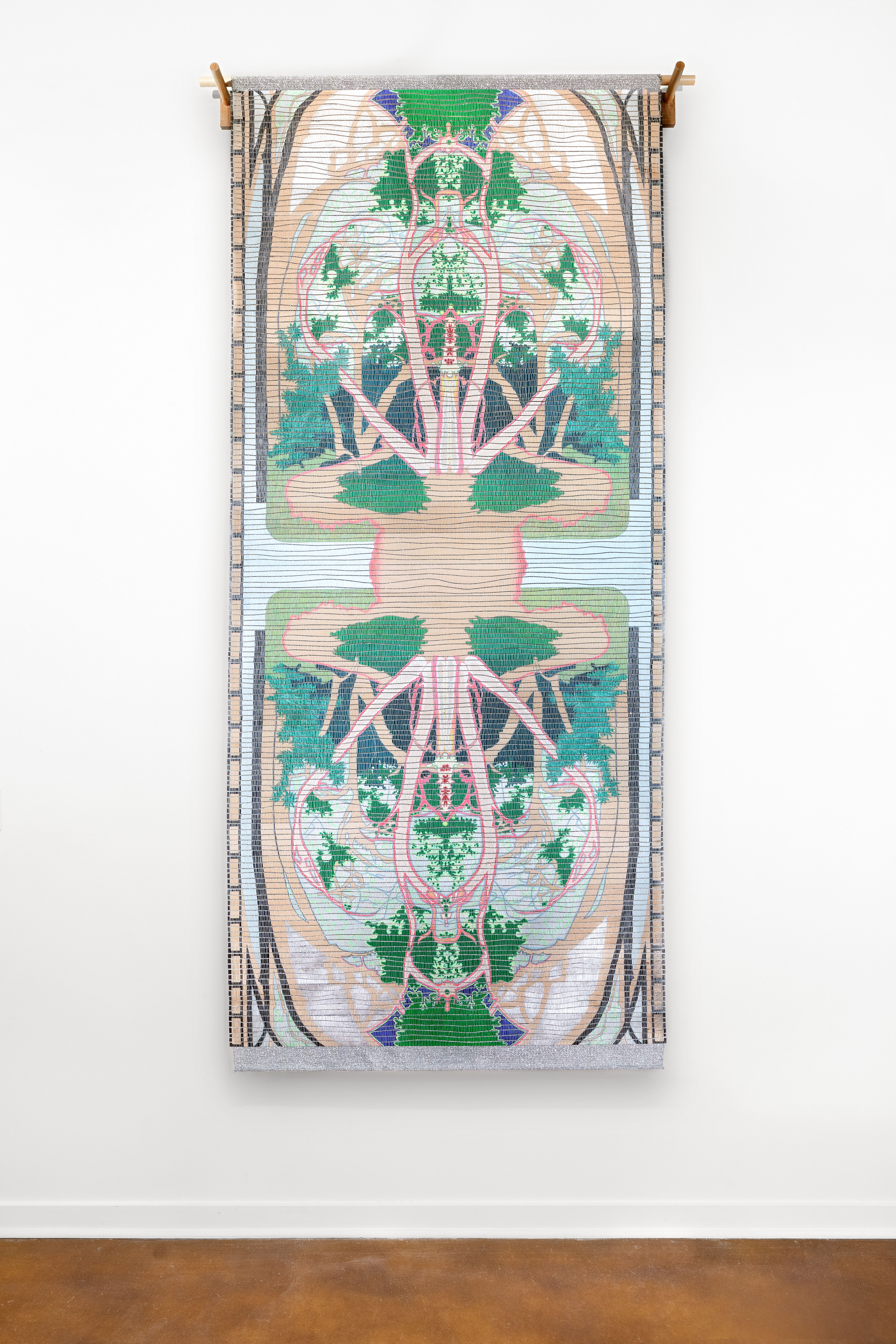
The focus of the show is the tree. With their winding roots and twisting limbs effortlessly growing towards the sun in unpredictable ways, a tree’s adaptive nature has allowed them to assume the essential position as a consumer of abandonment. They are the epitome of immortality as both the embodiment, and the organ, of regeneration. Each composition in the show spotlights an actual tree that is currently alive in the world. Their surrounding landscapes in real life vary from Southeast Michigan all the way to New Mexico, marking points along the artist’s personal journey. But the landscapes surrounding the trees in the paintings are fictional, with details taken from mythology and joined with entirely abstract elements. The deconstructed wood panels, carefully reconstructed with thread to reveal again an image of a natural form inside of an imagined world encourages holism as an approach to analysis. How do they speak as composites?
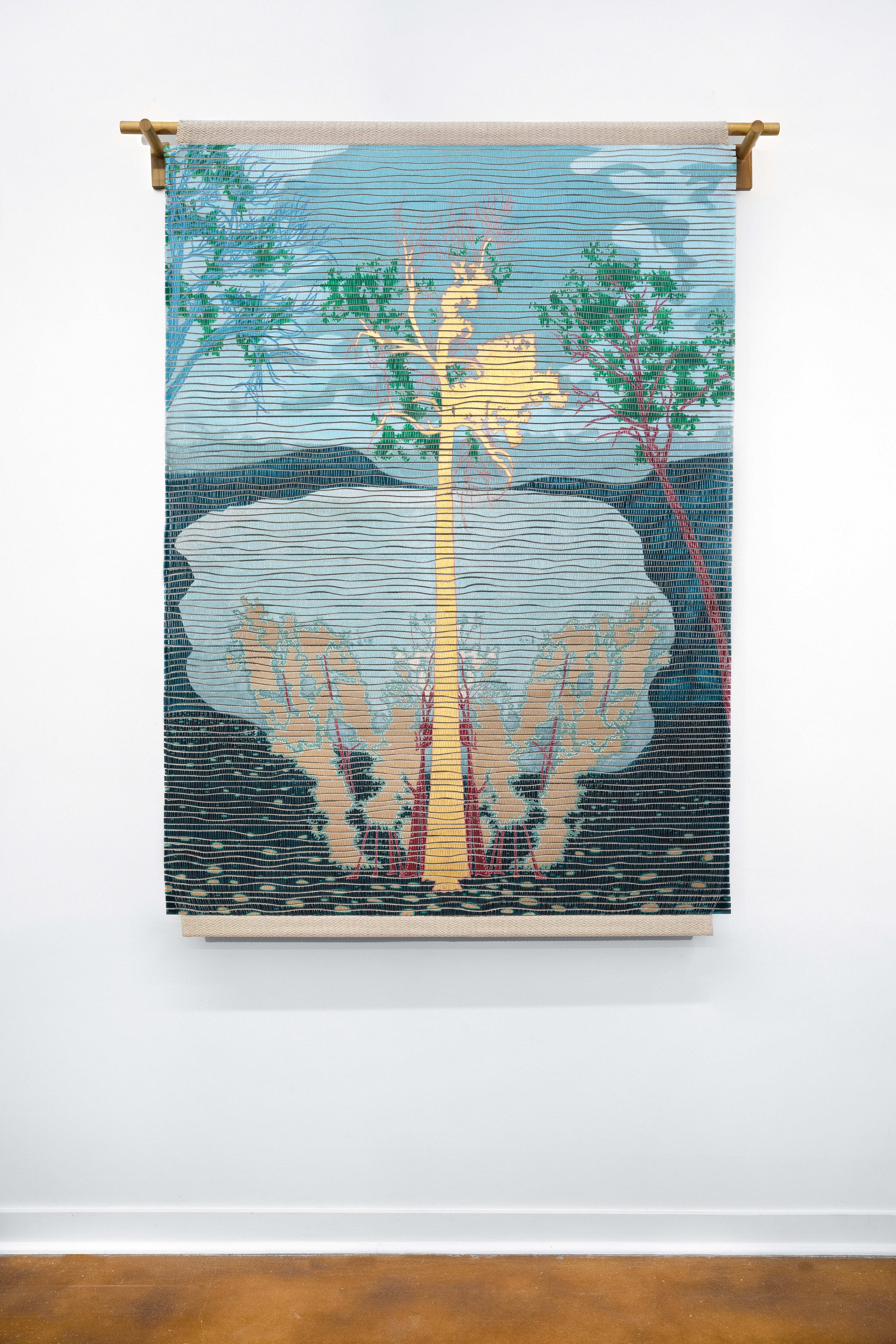
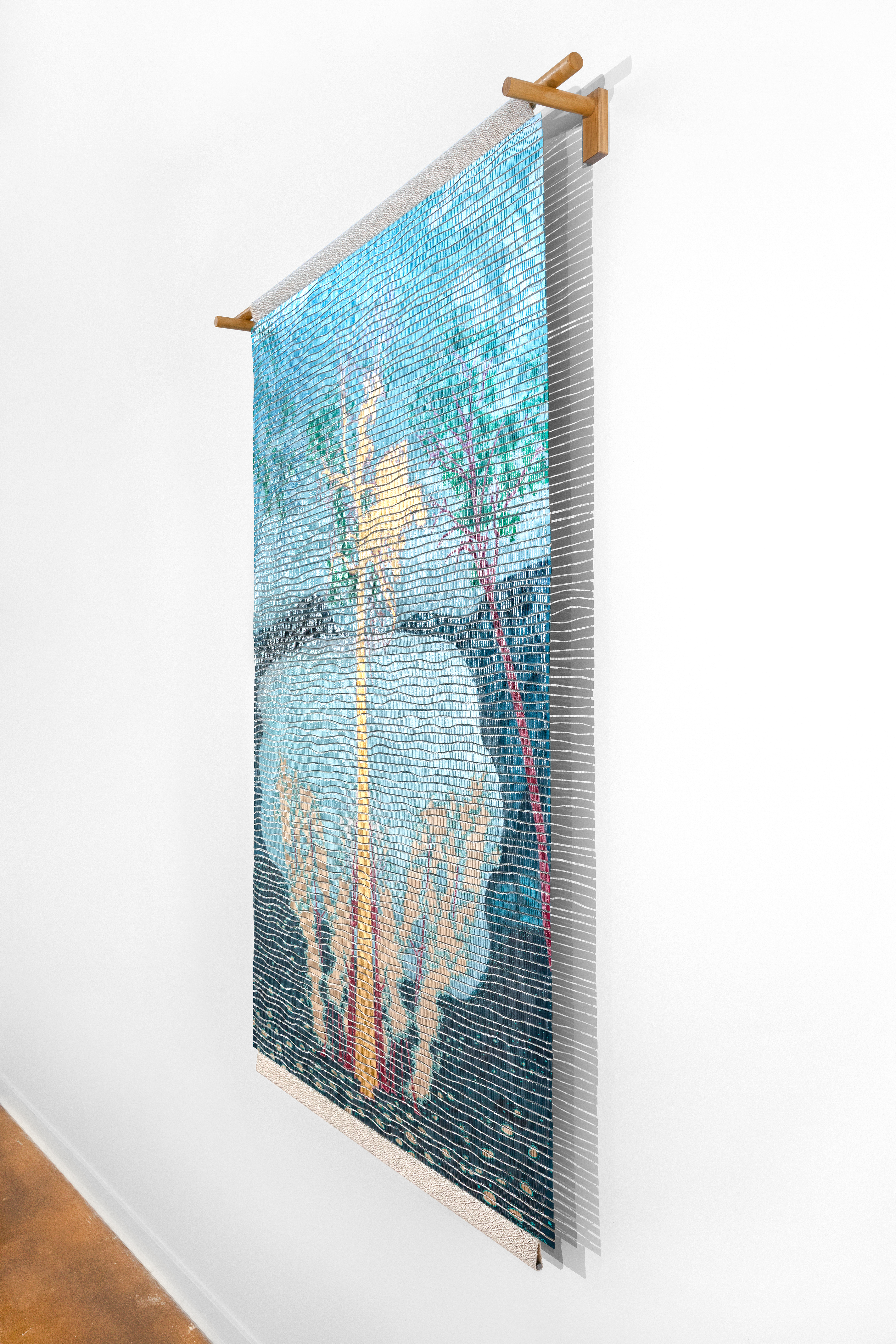
I had a chance to talk with Lynn about her history as an artist and educator, her background in philosophy and the conceptual concerns that guided this most recent body of work.
runner: Your career actually began with philosophy when you received a BA in philosophy with a certificate in Human Needs and Global Resources from Wheaton College in Illinois. You then went on to earn your BFA in Drawing and Painting at University of Colorado in Denver and an MFA in Fiber at Cranbrook Academy of Art. What caused you to pursue art after this initial education in Philosophy?
Lynn Bennett-Carpenter: I think through the practice of spending so much time with words, I slowly realized the limitation of words, and so I wanted to open up my approach to philosophy through making art. Art is also philosophy. It’s just a more visual and physical way to work through ideas. I find that writing and art are similar in that they both take a lot of time to produce, but they can also take a lot of time to consume if you want to really get something out of it.
r: I noticed that there is a focus on trees in the exhibition text…
LBC: Yes, these trees can be pinpointed on a map, and the fact that they are real in the world is so important to me. It allows the compositions to exist on a line between representational and imaginative. I use them in the work to represent gods. Years ago, I became obsessed with pre-historical Venus figurines that are found across so many world cultures and this led me to research small clay figurines in depth. The piece Venus pays homage to that figure. Around this time, I traveled to Mexico City to the Anthropological Museum and I saw a two-headed male figurine and was blown away by it too. In Roman mythology, Janus was the two-headed god of passageways, entrances and exits, life and death. The piece Janus in the show features a “two-headed” tree in front of two archways. Obviously thinking of the future of the Earth, it is easy to see that the trees will take over. We see it in Detroit and in abandoned societies all over the world. I was recently in the Yucatan Peninsula and was just amazed at how the jungle just completely obliterated the remains of advanced civilizations. They have been such powerful players in the story of Earth for so long and I think in these works, I am trying to elevate them as superheroes and Protagonists/actors in our own human stories.
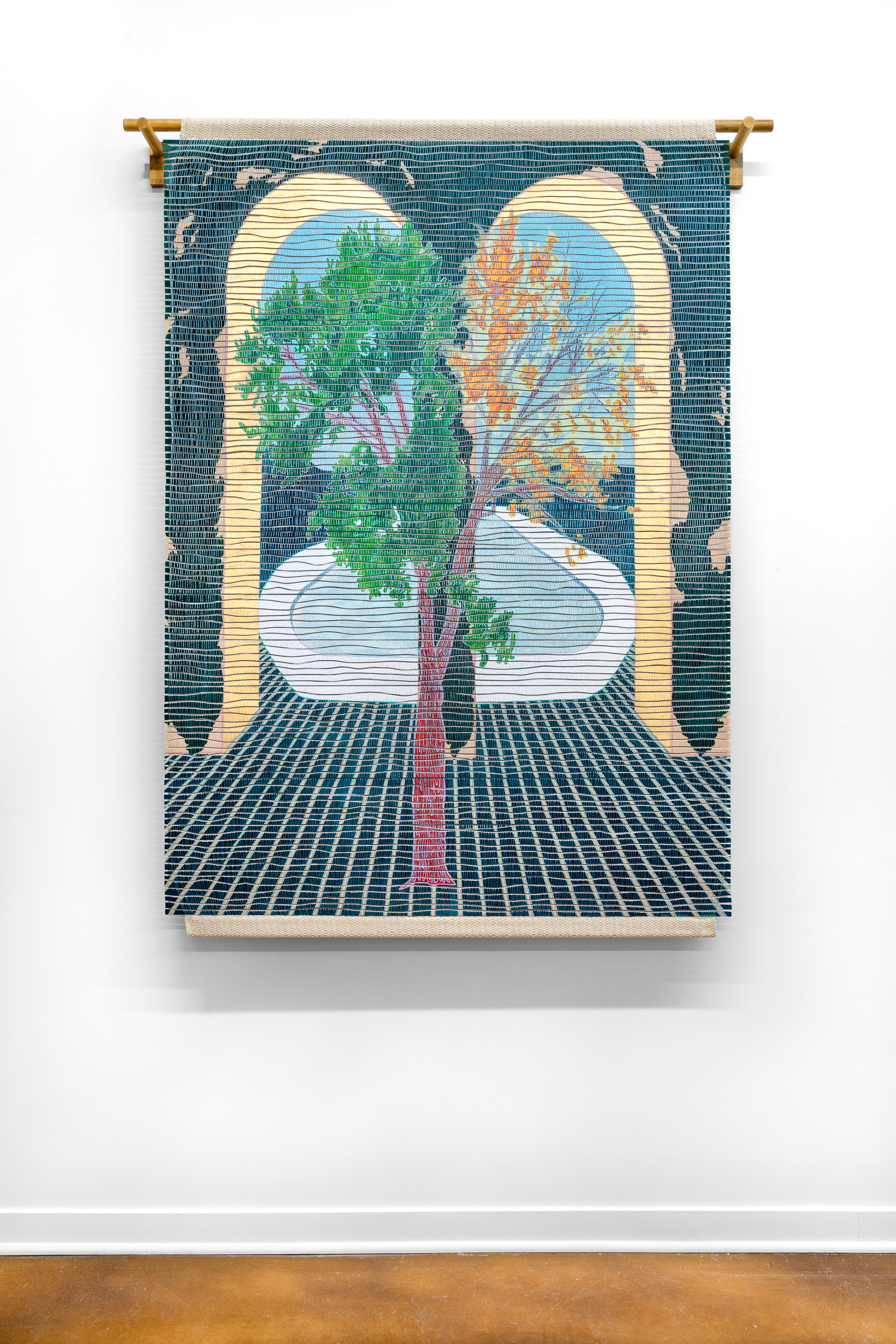
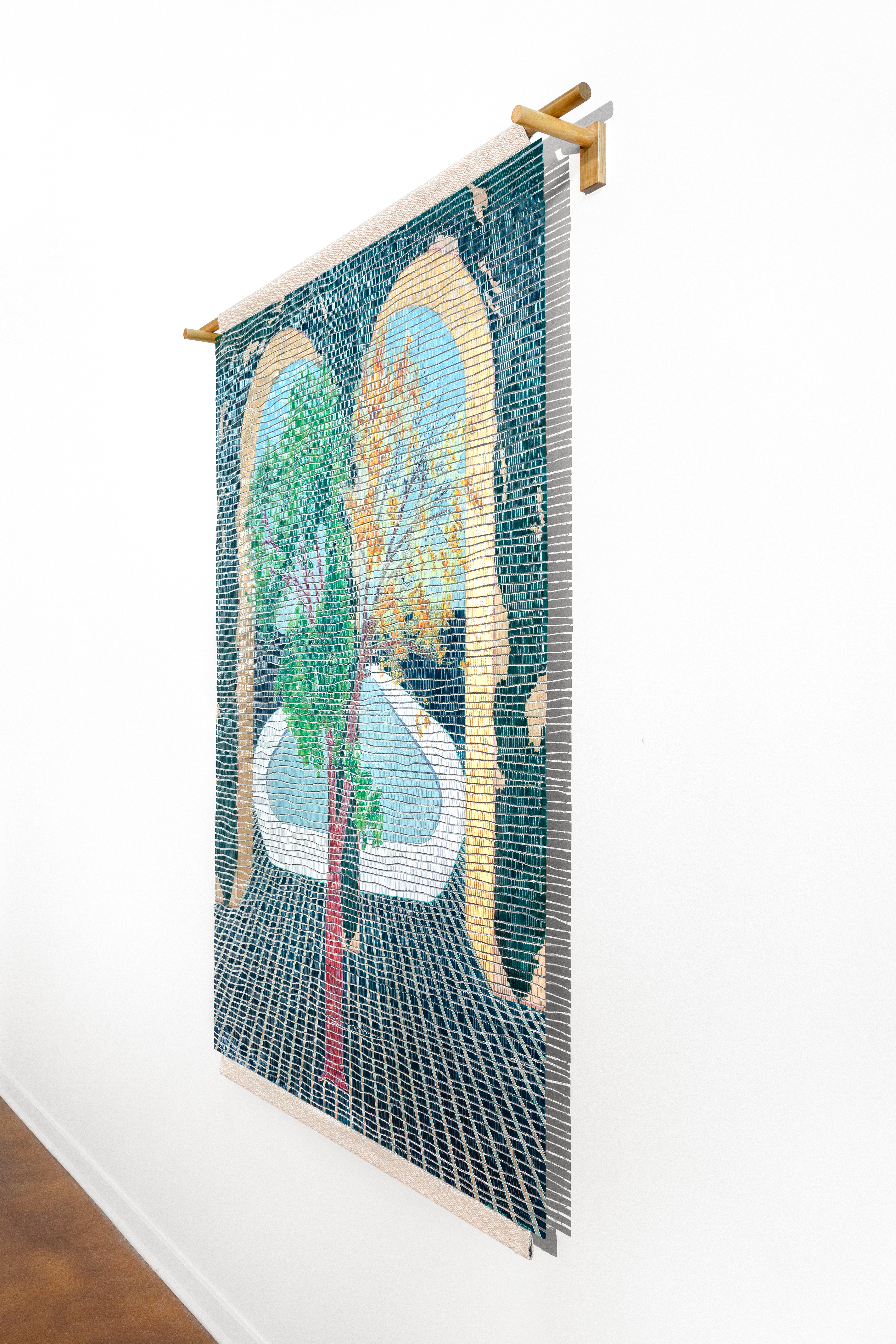
r: The tapestry-like pieces and the presence of natural forms like trees recall Japanese and Chinese landscape paintings. Do you have a particular interest in Asian aesthetics?
LBC: I think that people are particularly interested in the empty spaces of these works, which show up as flat while also implying space. This is a technique that is commonly found in Japanese and Chinese landscapes, but those associations are actually accidental. I am looking at art, textiles, and architecture from China, Japan, Persia, Spain, Kashmir, West Africa, and Mexico all the time. I also am looking across historical time and am inspired by advances and forgetfulness/failures/quirks of human culture and its expressions. I take all of it in and it both subconsciously and it consciously influences the work. I constantly am looking for ways in which what I am already and naturally doing in my particular studio connects to the big history. I am becoming less and less interested in the new and the shocking and more and more interested with reconnecting and remembering.
r: A common motif found throughout your work, from your drawings, to what you call “touchables,” to the installations, to the handwoven drawings, is the presence of amorphous forms in the imagery. As mentioned in the exhibition text, there is a reference to Rorschach tests, which highlight your investigations into human psychology, subjectivity and objective truth. How do these three things hold weight in your work?
LBC: Yes, so like the other references that come out when viewing the work, the Rorschach is an afterthought. I have a whole series of drawings on paper that this work initially started with. I think of them as kaleidoscopes. The imagery grows, is almost kinetic, and becomes an open format for interpretation when it is mirrored and abstracted. I really love Rorschach because there is no prescription. We are free to associate, but the Rorschach tests are completely by chance, completely abstract. By involving trees that are from real life, I am grounding the abstraction into reality and creating a harmony between subjectivity and objectivity.
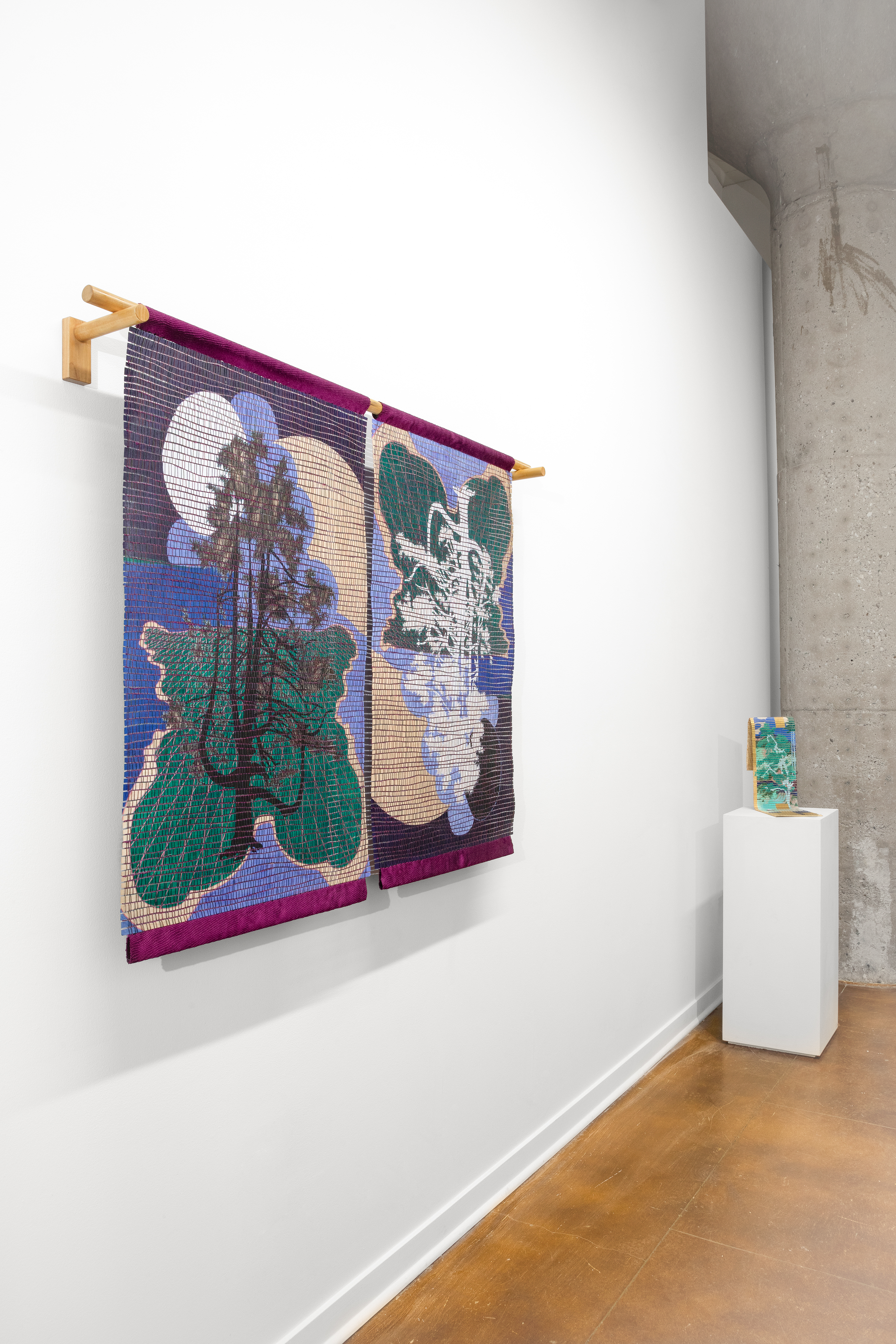
r: And there are so many interesting solutions to the presentations with this work. Almost like the work tells you how it wants to be shown. Do you find making and showing this work to be a process of discovery?
LBC: Yes, what I was doing before this work were large-scale interactive installations. This is something that goes back to my philosophy background. When I was graduated from college, I was reading the work of the philosopher Hans Georg Gadamer, who talks about the seriousness of play as a way to learn and understand the world and expand people’s horizons. The installation work I did was very playful and interactive. When I was making the installations, I was raising two young boys who were completely in their physical bodies learning about the world. The interactive installations were very much me wanting them to be welcomed into the work and wanting them to experience my work through all their senses including touching it. In this exhibition, I began to explore the handwoven drawings as sculptural objects, so I have a piece in the show that I encourage people to directly interact with and play with its arrangement on the pedestal. One of the big artists who influences is Lygia Clark, whose work is often touchable and for the body.
r: Could you speak a bit about your history with the weaving studio in Burkina Faso, West Africa called Namtenga Soundo Babisi?
LBC: Yes, that project started in 2007 when I was teaching at the Kingswood Weaving Studio at Cranbrook. I realized when I started teaching weaving that weaving would be an incredible skill to empower people. The village of Namtenga is on the edge of the Sahara Desert, where and farming is challenging and people are living at subsistence. My students, colleagues, collaborators in Bukina Faso, and I introduced a weaving studio as a way to empower the women there and provide a valuable skill that would bring in income to their families. It was successful and still functioning today!!
r: Do you plan to continue to explore the possibilities of handwoven drawings in your future work?
LBC: Yes, I’ve been working in this way that mixes drawings, painting and textiles together since 2015. Happily, this work is answering so many of the questions that previous work was exploring surrounding play. It is interesting how these previous ideas are showing up again and I am looking forward to discovering more and more through the methodology of the Handwoven Drawings.
Lynn Bennett-Carpenter’s Handwoven Drawings opened at Matéria’s Cass Corridor location on Saturday, February 10, and will be on view through March 30.
You can learn more about the gallery here:
https://www.materia-art.com/
And you can learn more about the artist here:
https://marcelynbennettcarpenter.com/home.html